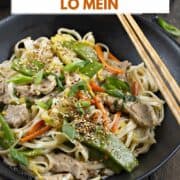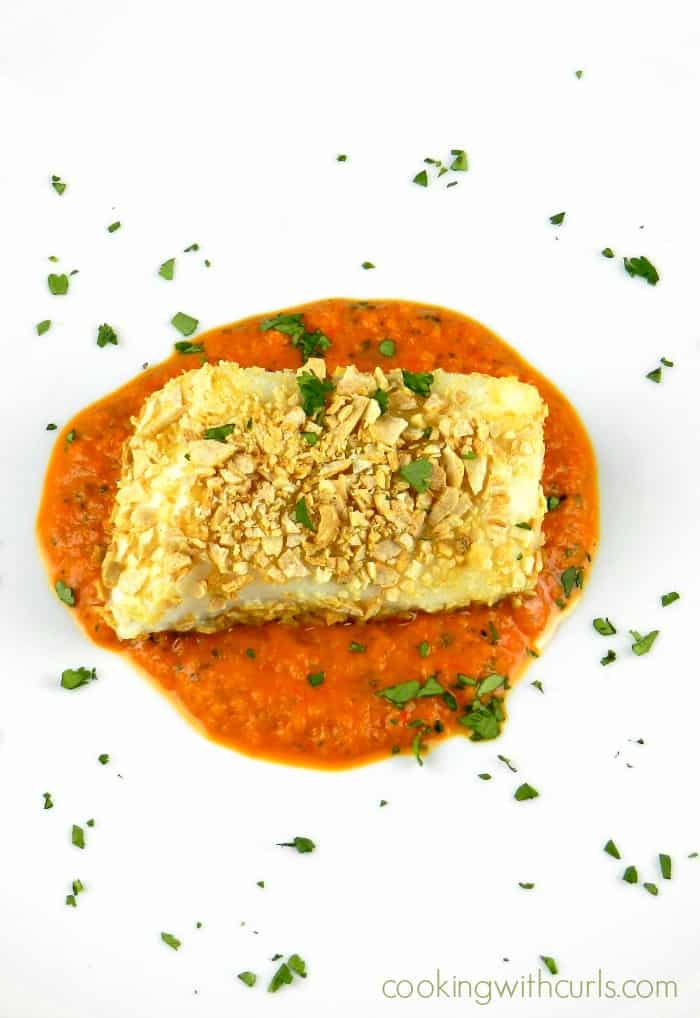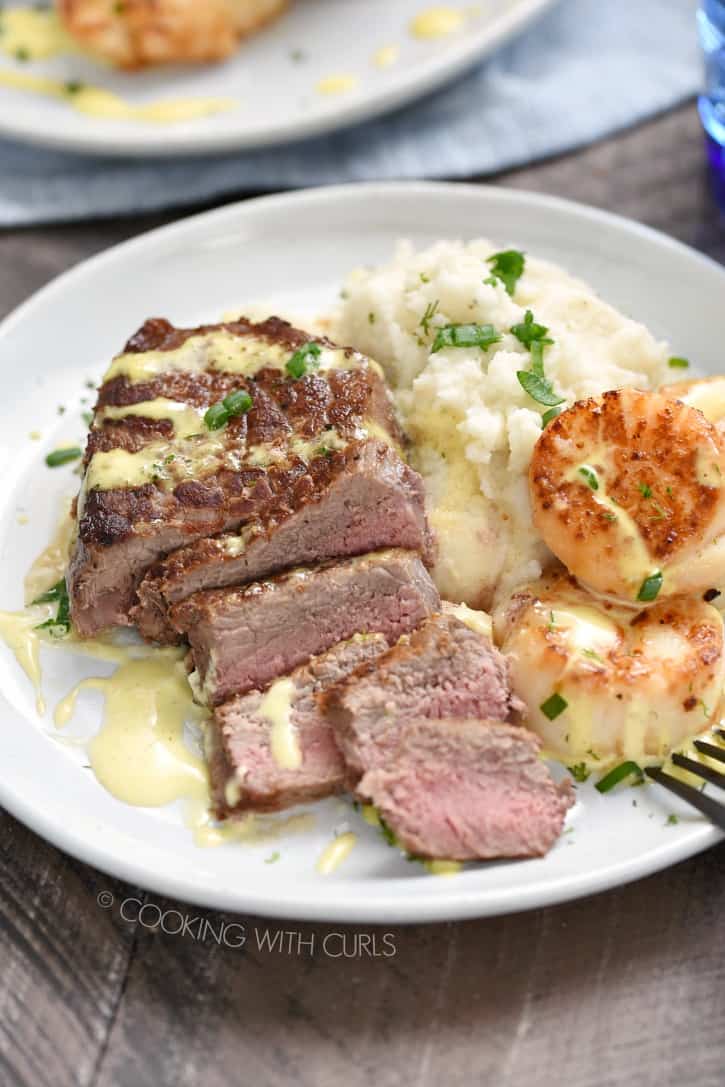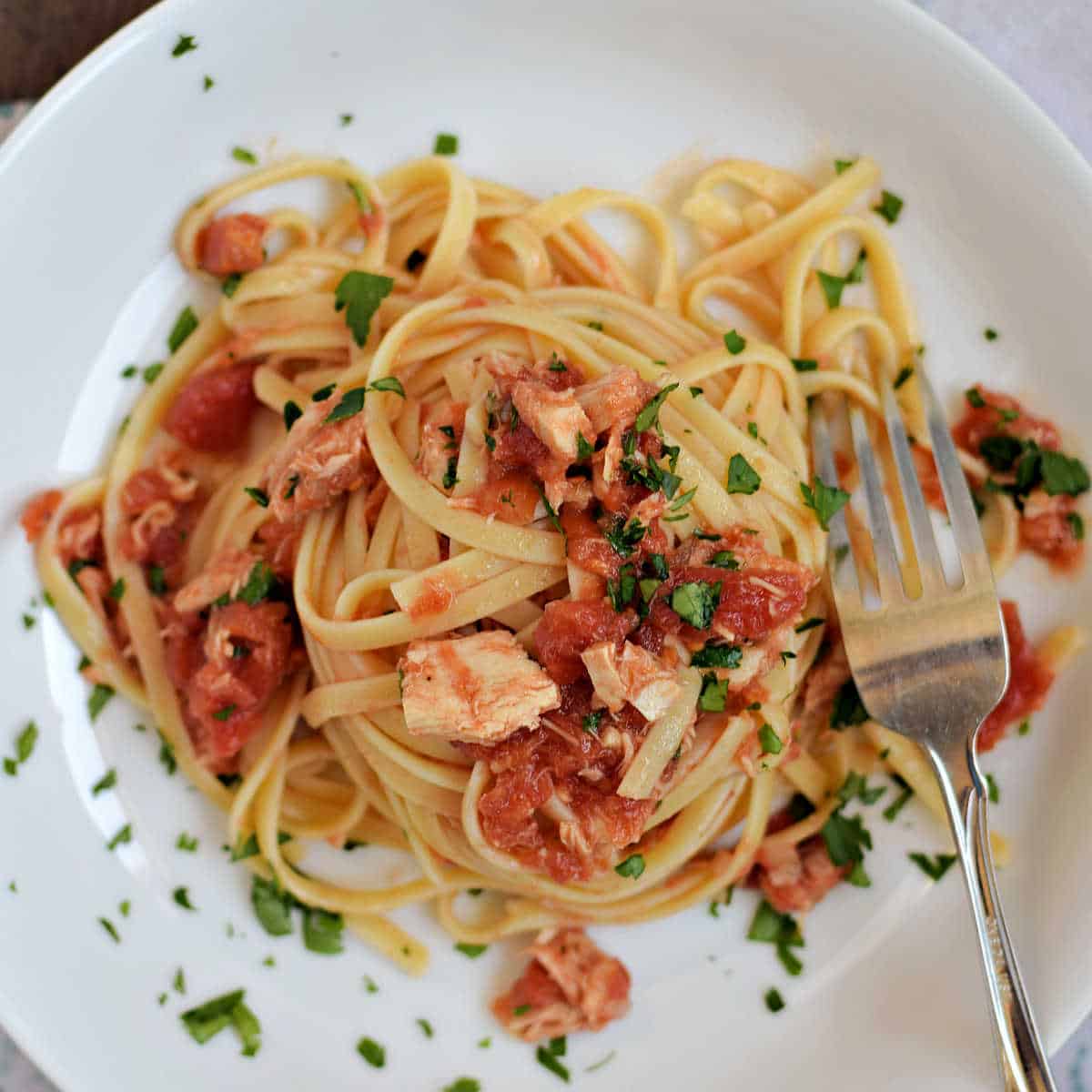Pork Lo Mein
This post may contain affiliate links. As an Amazon Associate I earn from qualifying purchases. For more information, please visit my disclosure page.
Do yourself a favor and skip the Chinese takeout by making this easy Pork Lo Mein recipe at home! This delicious meal features thinly sliced pork tenderloin, vegetables, and lo mein noodles stir-fried with a delicious soy-ginger-garlic-sauce.
Check out 25 Chinese Recipes for even more delicious takeout options!
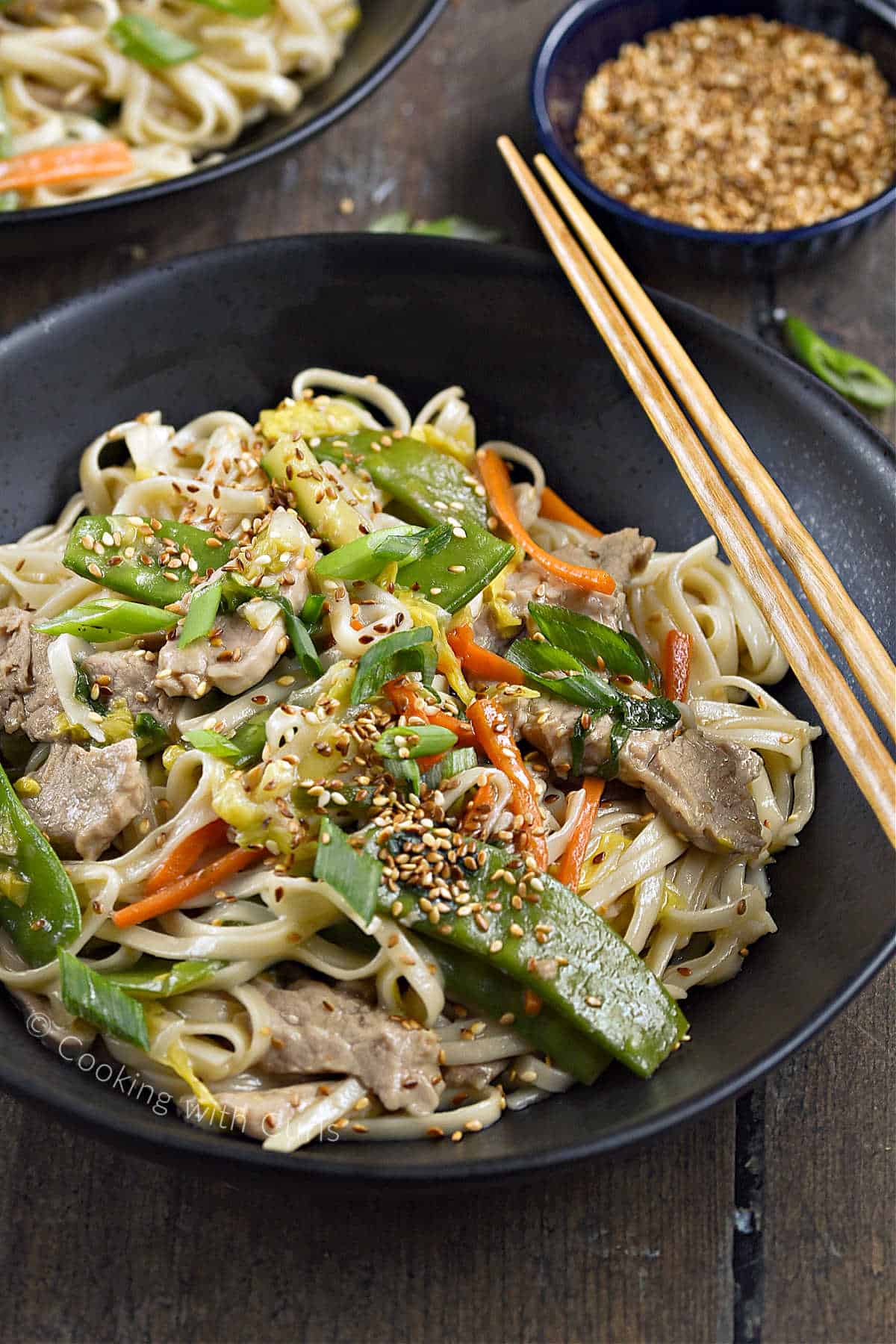
I may or may not have gone a bit overboard with the sesame seeds, but the end result is amazing!! Our family loves all-things stir fry, and this flavor-packed meal will rival any local restaurant.
If you love Asian-inspired noodle dishes as much as we do, check out these other recipes too; Chicken Chow Mein, Asian Chicken Noodles Bowls, and Combination Yaki Soba.
Pork Lo Mein Ingredients
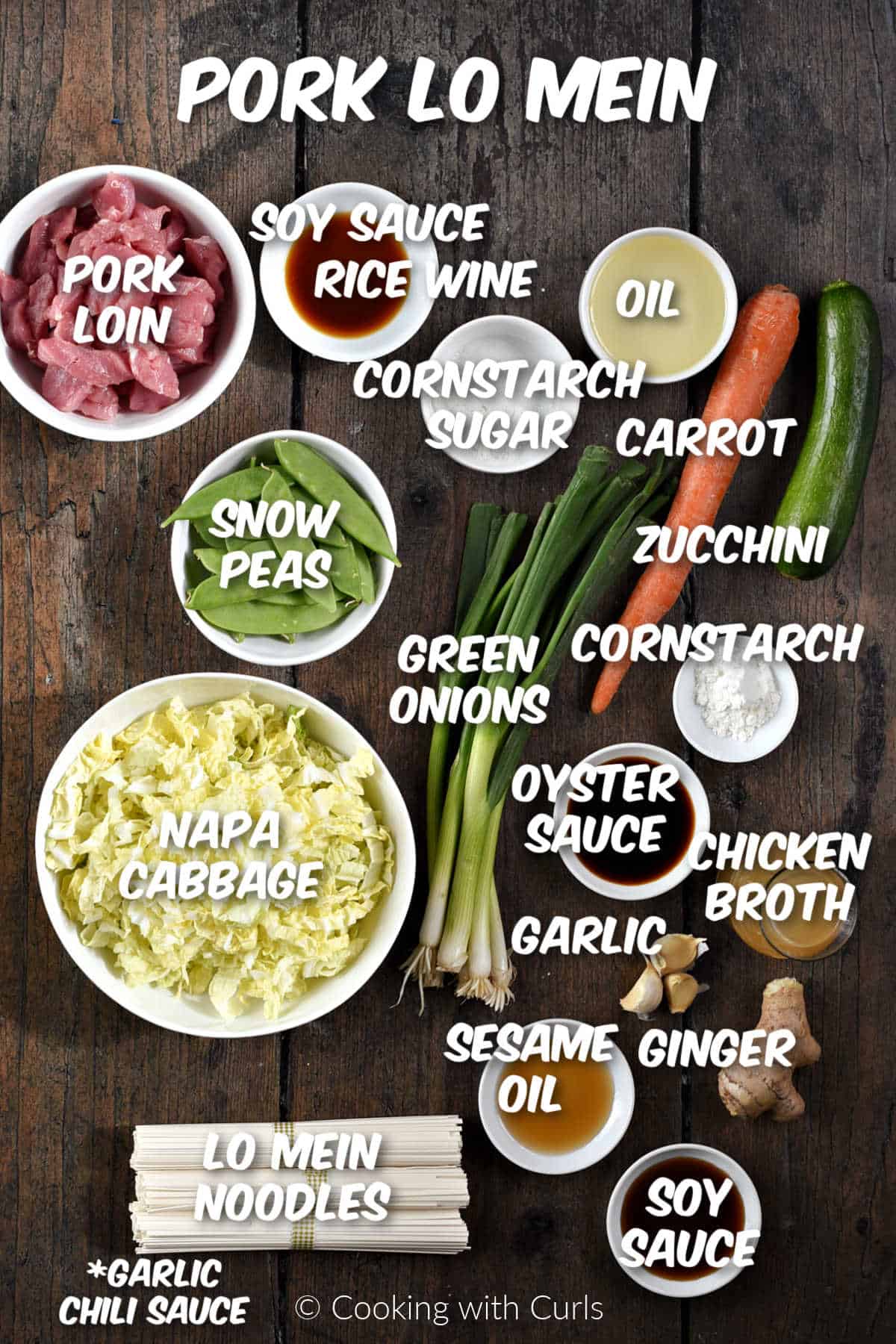
Most of these ingredients can be found at your local grocery store depending on where you live. I have included substitutions just in case you run into problems.
- Pork – pork tenderloin or center-cut pork chops that are thinly sliced to .24-inches thick, is the most tender pork you can use in this recipe.
- Marinade – the pork marinates in a combination of cornstarch, granulated sugar, soy sauce, and rice wine (or dry sherry) while you prep the vegetables.
- Carrot, zucchini, snow peas, and Napa cabbage – this is a traditional combination but feel free to substitute whatever vegetables you have on hand; bell pepper, mushrooms, water chestnuts (add with the noodles), etc.
- A light, neutral oil – light olive oil, canola, coconut are all good options to stir fry the pork and the vegetables.
- Lo mein sauce – includes chicken broth, soy sauce, oyster sauce, garlic, ginger, garlic-chili sauce, cornstarch, and toasted sesame oil to create that slurpy goodness.
- Green onions – these are cut into 2-inch segments, then sliced in half lengthwise to add even more flavor and texture.
- Lo Mein Noodles – are egg noodles that are sold fresh, if you can find them, and dry in a package if you cannot. Spaghetti, linguine, or your choice of pasta will also work.
- Wok or large skillet, bamboo turners, spider strainer, and pot to boil the water.
Be sure to check out the detailed printable recipe card below
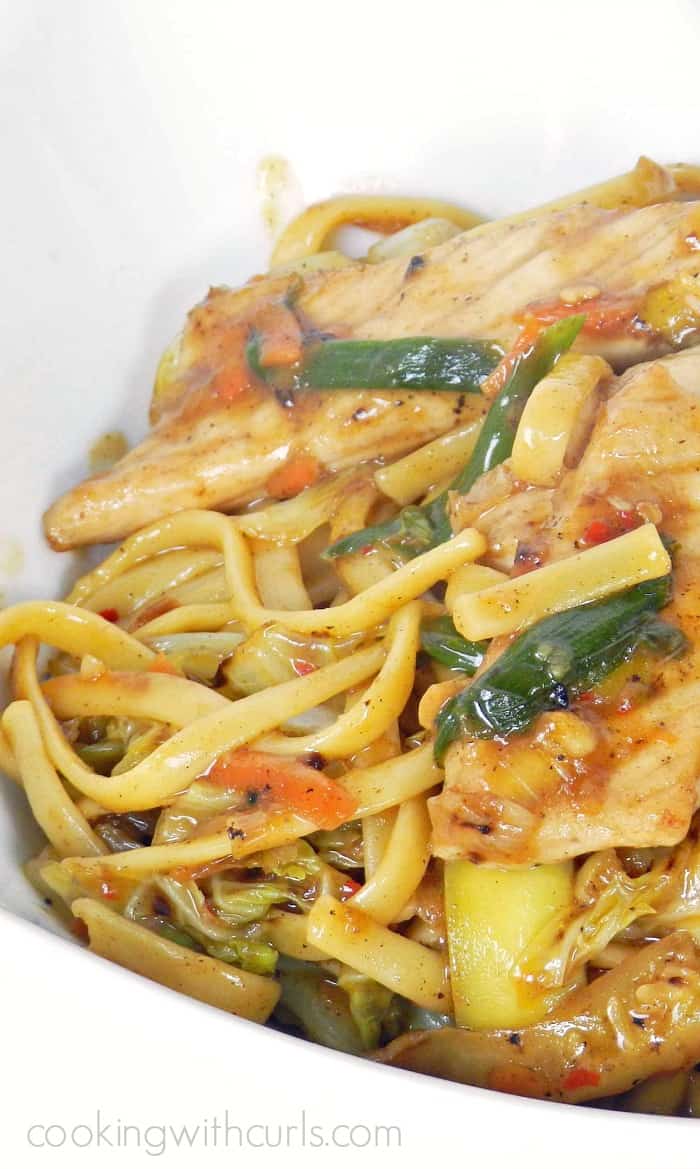
I originally shared this recipe January 2013. Updated January 2023.
How to make easy Pork Lo Mein
Mix the marinade ingredients together in a small bowl. Place the pork in a large bowl, pour the marinade on top, stir to combine. Set aside for about 30 minutes.
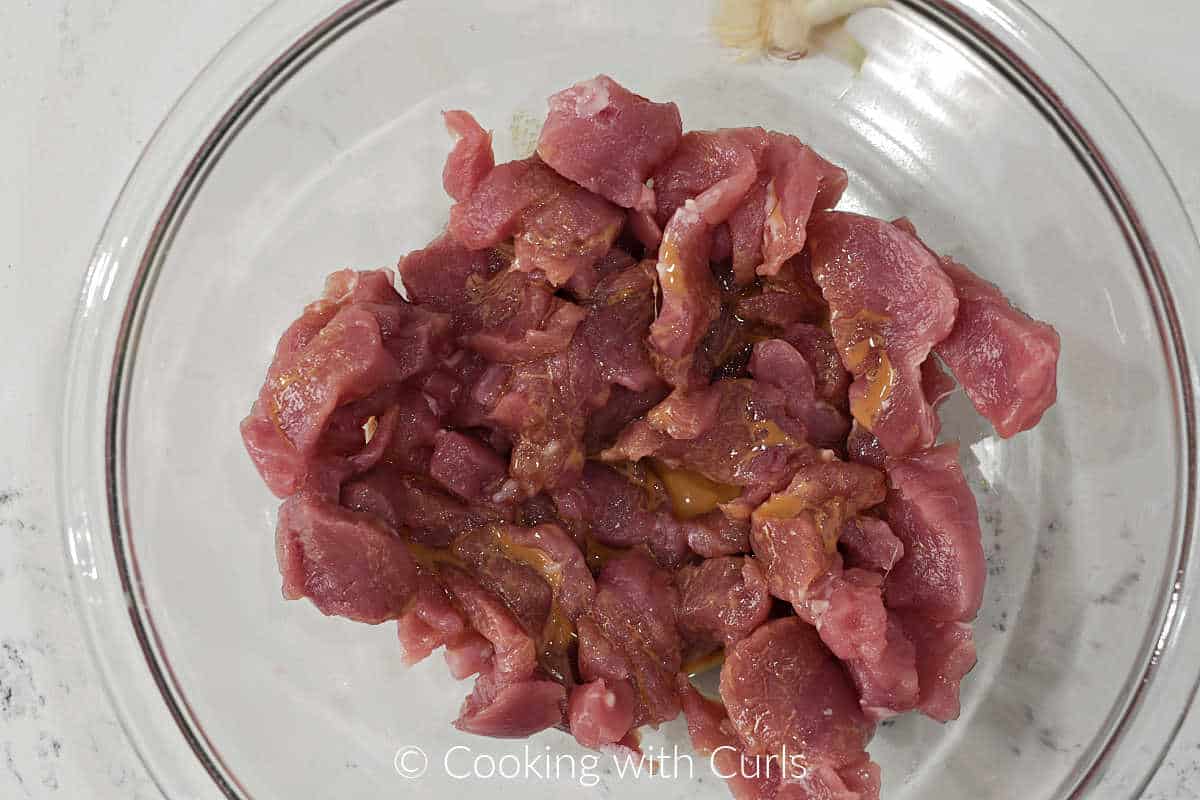
Thinly slice the cabbage, julienne the zucchini and peeled carrots, and remove the ends of the snow peas. Cut the green onions into 2-inch segments then slice in half lengthwise. Set the vegetables aside.
Make the lo mein sauce
Whisk together the chicken broth soy sauce, oyster sauce*, minced garlic, grated ginger, garlic-chili sauce, and toasted sesame oil. Set aside.
Boil the noodles
Bring a large pot of water to a boil. Cook the noodles according to package instructions. Drain and set aside if they are finished before the rest of the dish.
Put it all together
Add 2 tablespoons of oil to wok, then add pork and cook just until no longer bright pink, about 1 to 2 minutes. Push to the sides of the wok.
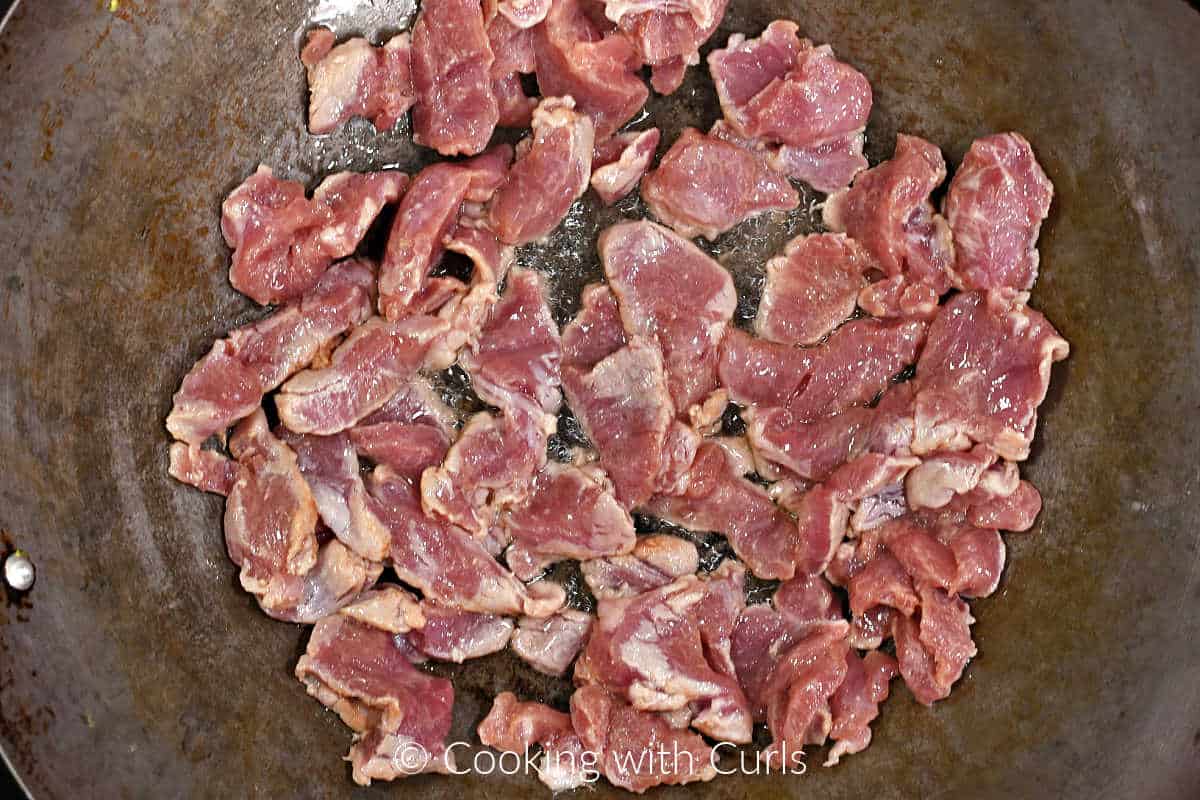
Add the remaining oil to the wok, then add the carrots, zucchini, snow peas, green onions, and cabbage. Cook, stirring occasionally until tender and the cabbage starts to look wilted, 5 to 7 minutes.

Add the sauce and cooked, drained noodles to the wok and toss to combine.

Simmer until sauce starts to thicken. The sauce will continue to thicken as it cools.
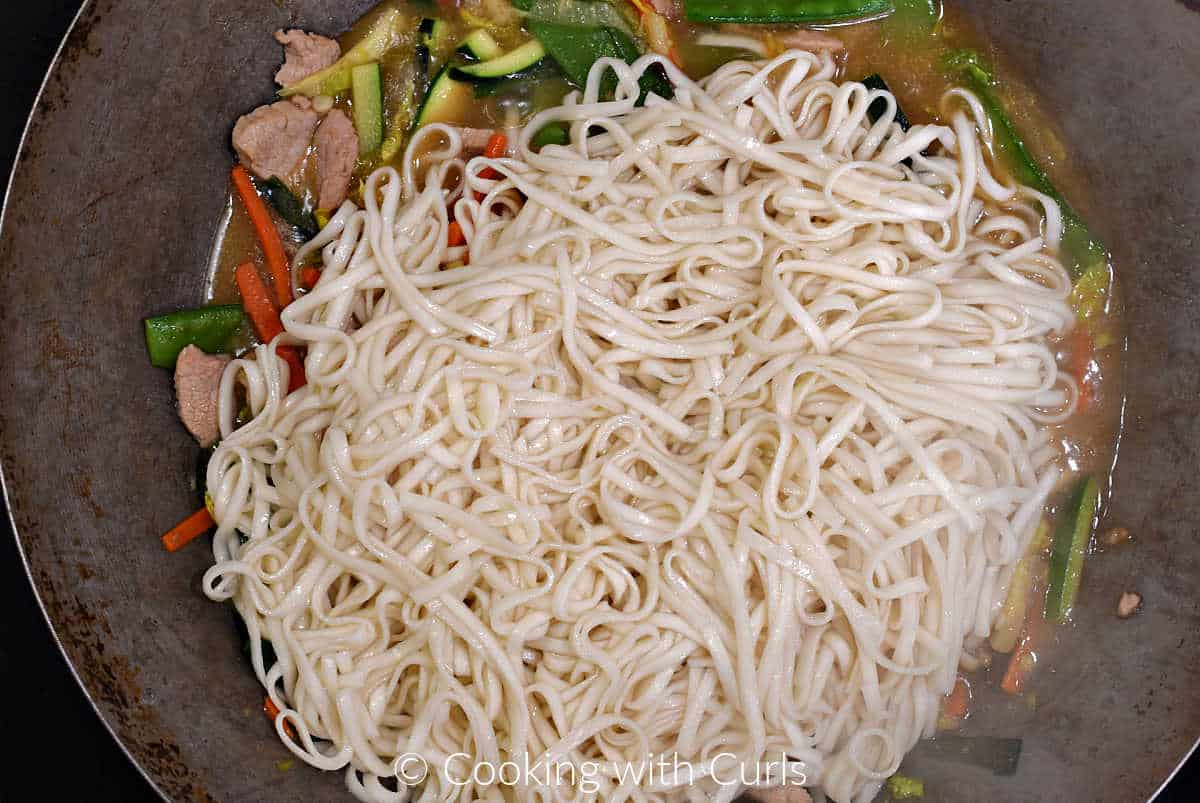
Transfer to a serving bowl and serve immediately. If you like your food spicy, serve with additional chili-garlic sauce, red pepper flakes, or drizzle with sriracha sauce.

Got Leftovers?
Allow lo mein to cool completely before placing in an airtight container. Store in the refrigerator for up to 4 or 5 days.
Reheat leftovers in the microwave, or on the stove in a skillet. If lo mein is too dry, add a tablespoon or two of chicken broth or water to loosen the sauce back up.
Chow Mein vs Lo Mein
Have you ever wondered what the difference is between chow mein and lo mein? Chow Mein translates to “fried noodles”, while Lo Mein translates to “tossed noodles”. Some restaurants in America use these terms interchangeably, but they are prepared in different ways.
Chow mein is made with noodles that are cooked and then fried before adding the meat and vegetables. The noodles will soften a bit when added to the sauce, but they will still be crispier and taste like they have been fried. The overall dish has a drier texture then the saucier lo mein.
Lo mein is made by adding the cooked noodles to the meat and vegetables at the end of the cooking process. The noodles remain softer and do not have a fried taste, allowing the other ingredients in the dish to show off their flavors. Lo mein has more sauce allowing for the “slurpy” texture that we all love.
Tools used to create this recipe
You can see the rest of my favorite kitchen tools and gadgets here in my Amazon Affiliate Page. I earn a small commission when you purchase through my links, at no cost to you, so I can keep bringing you more delicious recipes!
- Wok or Large Skillet
- Cutting Board & Chefs Knife
- Bamboo Turners – I use two, one for each side to lift and toss
- Spider Strainer or Colander for the noodles
- Microplane to grate the ginger – remember to peel first with edge of a spoon
- Garlic Rocker/Mincer
More delicious Chinese recipes
- Egg Roll in a Bowl
- Chinese Orange Chicken
- Crispy Pork Wontons
- Mongolian Beef
- Chicken Chow Mein
- Crab Rangoons
If you love this recipe, please rate it five stars and help me share on facebook and to help other readers in our community!
Enjoy!!
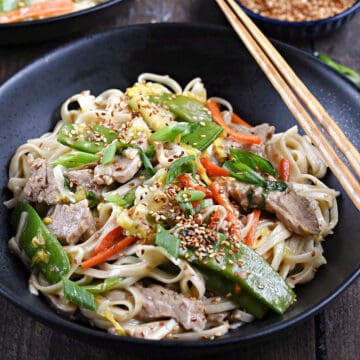
Pork Lo Mein
Equipment
Ingredients
- 1 pound pork loin cut into .25-inch strips
Marinade
- 1 tablespoon cornstarch
- 1 teaspoon sugar granulated or brown
- 1 teaspoon soy sauce
- 1 teaspoon rice wine or dry sherry
Vegetables
- 1 medium carrot julienned – cut into thin strips
- 1 medium zucchini julienned
- 4 ounces napa cabbage thinly sliced
- 1 cup snow peas ends trimmed
- 1 bunch green onions green parts only, cut into 2-inch segments then sliced lengthwise
Lo Mein Sauce
- 1 tablespoon cornstarch
- 1 cup chicken broth
- 2 tablespoons soy sauce
- 2 tablespoons oyster sauce*
- 3 cloves garlic minced
- 1 tablespoon fresh ginger grated or finely minced
- 1 tablespoon toasted sesame oil
- 1 tablespoon garlic chili sauce or more to taste
- 4 tablespoons neutral flavored oil divided – light olive oil, canola, coconut
- 8 ounces lo mein noodles cooked – substitute linguine or spaghetti
Instructions
- Mix the marinade ingredients together in a small bowl. Place the pork in a large bowl, pour the marinade on top, stir to combine. Set aside for about 30 minutes.
- Thinly slice the cabbage, julienne the zucchini and peeled carrots, and remove the ends of the snow peas. Cut the green onions into 2-inch segments then slice in half lengthwise. Set the vegetables aside.
- Whisk together the chicken broth soy sauce, oyster sauce*, minced garlic, grated ginger, garlic-chili sauce, and toasted sesame oil. Set aside.
- Bring a large pot of water to a boil. Cook the noodles according to package instructions. Drain and set aside if they are finished before the rest of the dish.
- Add 2 tablespoons of oil to wok, then add pork and cook just until no longer bright pink, about 1 to 2 minutes. Push to the sides of the wok.
- Add the remaining oil to the wok, then add the carrots, zucchini, snow peas, green onions, and cabbage. Cook, stirring occasionally until tender and the cabbage starts to look wilted, 5 to 7 minutes.
- Add the sauce and cooked, drained noodles to the wok and toss to combine. Simmer until sauce starts to thicken. The sauce will continue to thicken as it cools.
- Transfer to a serving bowl and serve immediately. If you like your food spicy, serve with additional chili-garlic sauce, red pepper flakes, or drizzle with sriracha sauce.
Notes
- Allow lo mein to cool completely before placing in an airtight container. Store in the refrigerator for up to 4 or 5 days.
- Reheat leftovers in the microwave, or on the stove in a skillet. If lo mein is too dry, add a tablespoon or two of chicken broth or water to loosen the sauce back up.
- *Substitute fish sauce, or hoisin sauce for the oyster sauce if not available.
- Feel free to substitute whatever vegetables you have on hand; bell pepper, mushrooms, water chestnuts, etc. If using water chestnuts, add them with the noodles and sauce.
- Substitute gluten-free noodles if needed.

